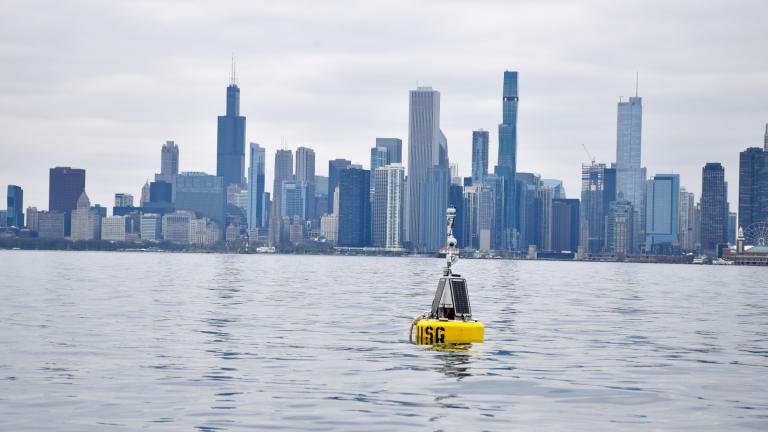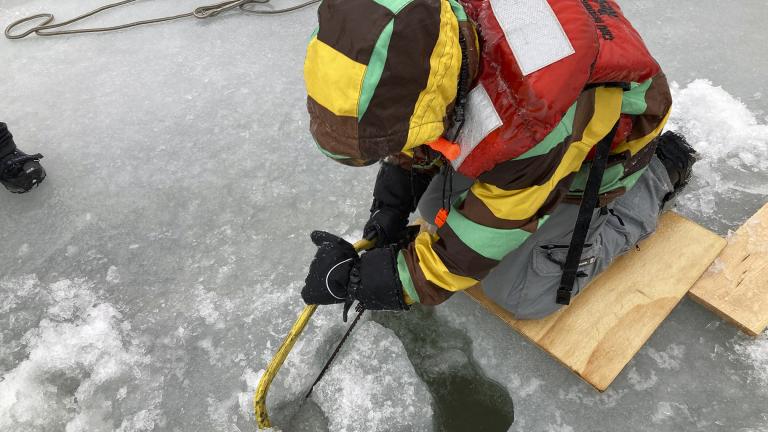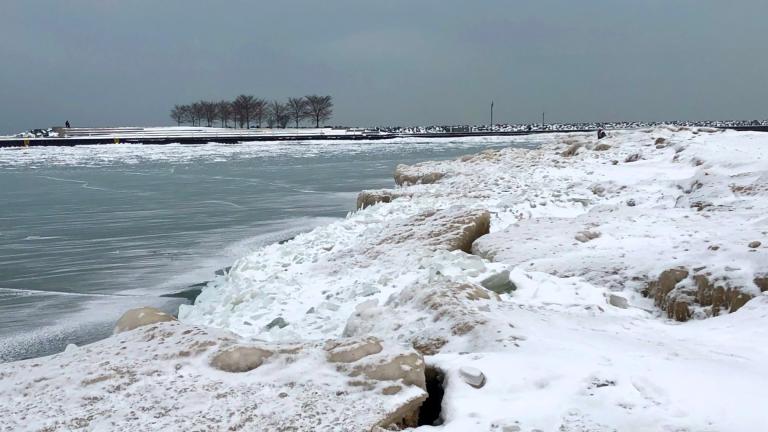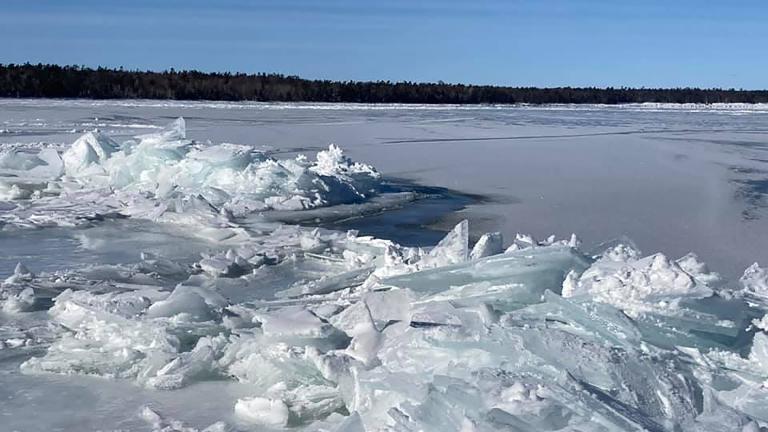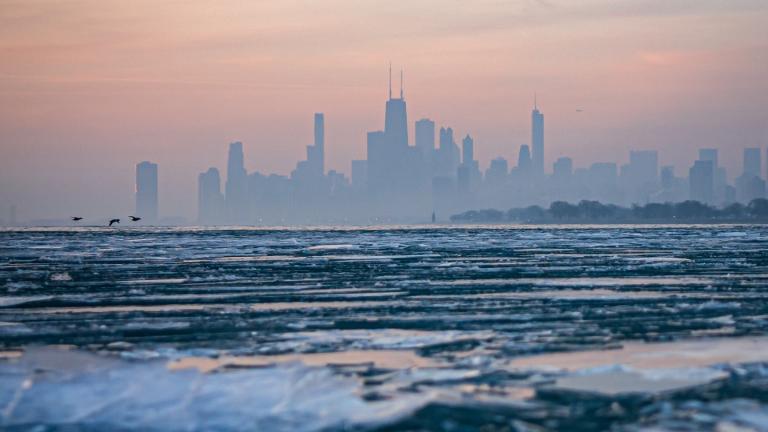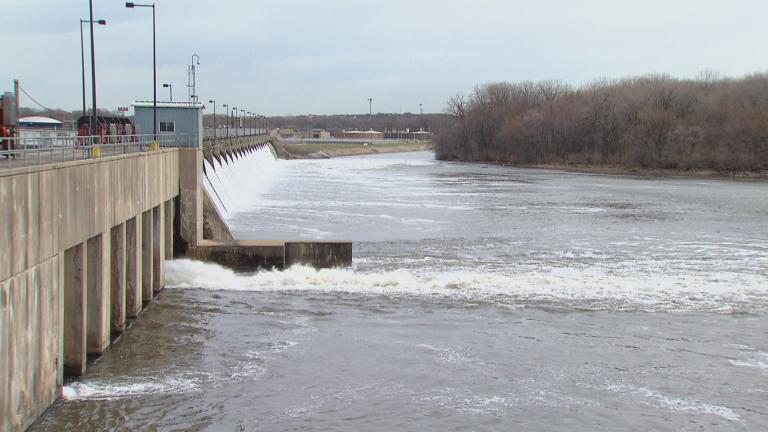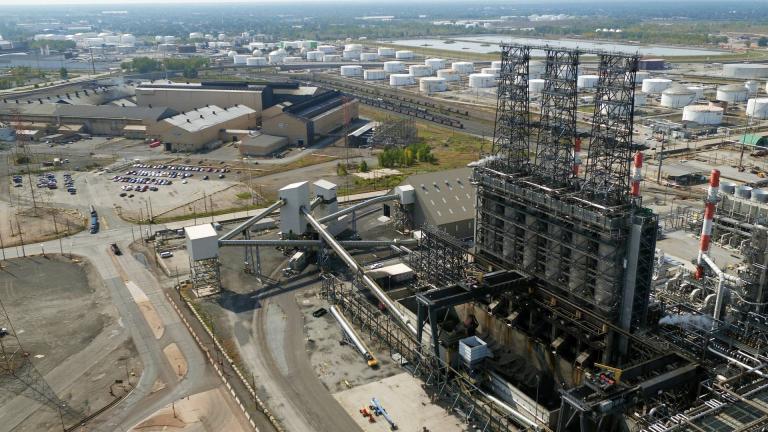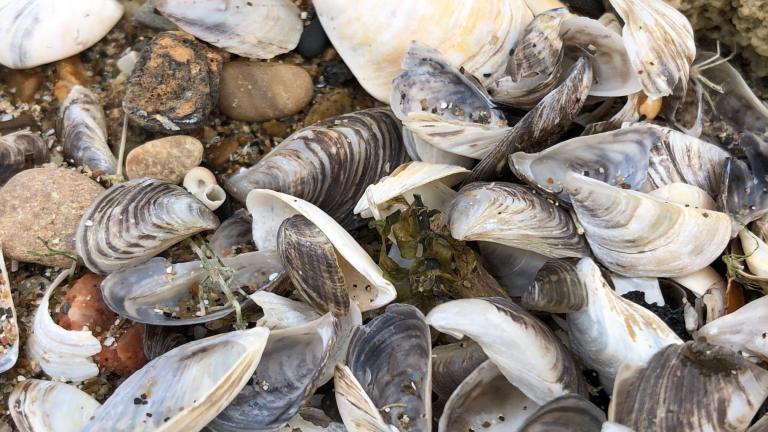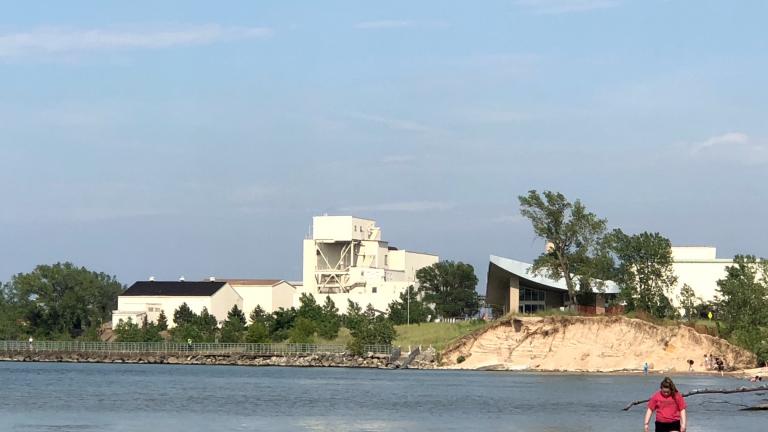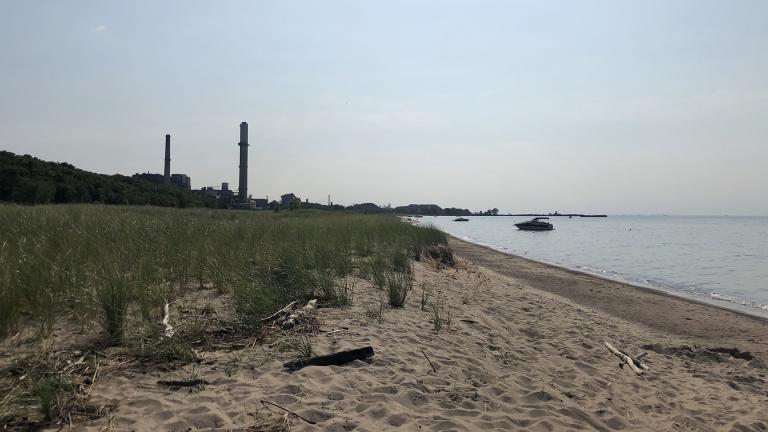Anchored a mile off Navy Pier, Chuoy the Buoy fills a Chicago-sized gap in shoreline monitoring. Swimmers, boaters, anglers, researchers and meteorologists alike will benefit from data collected close to the city’s lakefront.
Lake Michigan
Field studies over the past few weeks — a collective effort known as the “Winter Grab” — were intended to boost knowledge of what happens in the five lakes when they’re covered partially or completely with ice.
As enchanting as Lake Michigan's ice may appear, it’s unmistakably dangerous, as evidenced this week by the presumed drowning of an Indianapolis man who fell into the water off shelf ice at Indiana Dunes National Park on Monday.
Lake scientists have long considered winter a season when aquatic activity slows. But researchers now think more is going on in the bitter depths than previously believed — including activity influenced by climate change.
Lake Michigan is doing the most to keep us entertained during the bleak mid-winter. First came pancake ice and now it’s serving up ice balls the size of boulders.
The U.S. Army Corps of Engineers has allocated $225.8 million to the Brandon Road Lock and Dam invasive carp barrier. The funds will complete the planning and engineering phase of the project.
You’ve heard of blizzards and maybe even the polar vortex, but have you heard of ice pancakes? What about ice bites or ice jams? These unique names sound fascinating but require specific weather conditions.
Environmentalists Vow to Keep Fighting
A 20-year extension of the dump, operated by the Army Corps of Engineers to hold toxic sludge dredged from Lake Michigan, is still under review. The dump was supposed to be retired in 2022 and turned over to the Chicago Park District for redevelopment.
The U.S. District Court settlement modifies a previous consent decree that required BP Products North America Inc. to limit releases from the sprawling facility on the southwestern shore of Lake Michigan.
Recent storm waves stirred up deposits of invasive mussels from the bottom of Lake Michigan and brought them ashore, begging the question: Would you know a quagga mussel if you saw one?
Mother Nature is throwing the kitchen sink at Chicago, weather-wise, to kick off the work week.
The Chicago Department of Water Management is calling on the EPA to make protection of Lake Michigan from industrial pollution a priority after U.S. Steel’s Midwest Plant experienced two leaks in two weeks into a waterway that feeds into the region’s source of drinking water.
For the second time in two weeks, Indiana Dunes National Park has had to close its beaches due to an unknown substance leaking into the water along its Portage shoreline.
The Environmental Protection Agency confirmed the “reddish-orange discharge” that poured into Lake Michigan on Sunday from a steel plant in Portage, Indiana, was caused by high levels of iron, and says there’s no indication of health risks for people who may come into direct contact with the water.
U.S. Steel is reporting that a “rusty colored” discharge that poured into Lake Michigan on Sunday from its plant in Portage, Indiana, was due to elevated iron levels.
Officials from the Indiana Department of Environmental Management are investigating a “rusty colored liquid” discharged from the U.S. Steel plant in Portage, spotted Sunday evening in the Burns Waterway.

